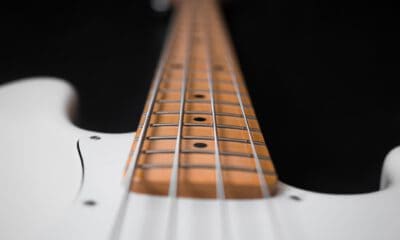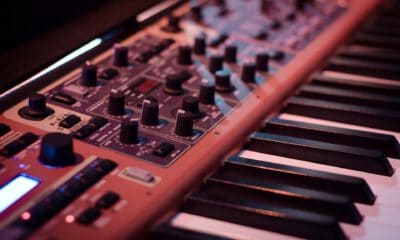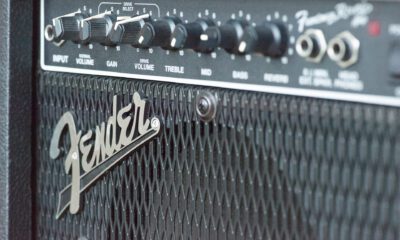Guitar
Do Guitar Amplifiers Work For Microphones? Explained in 2 minutes
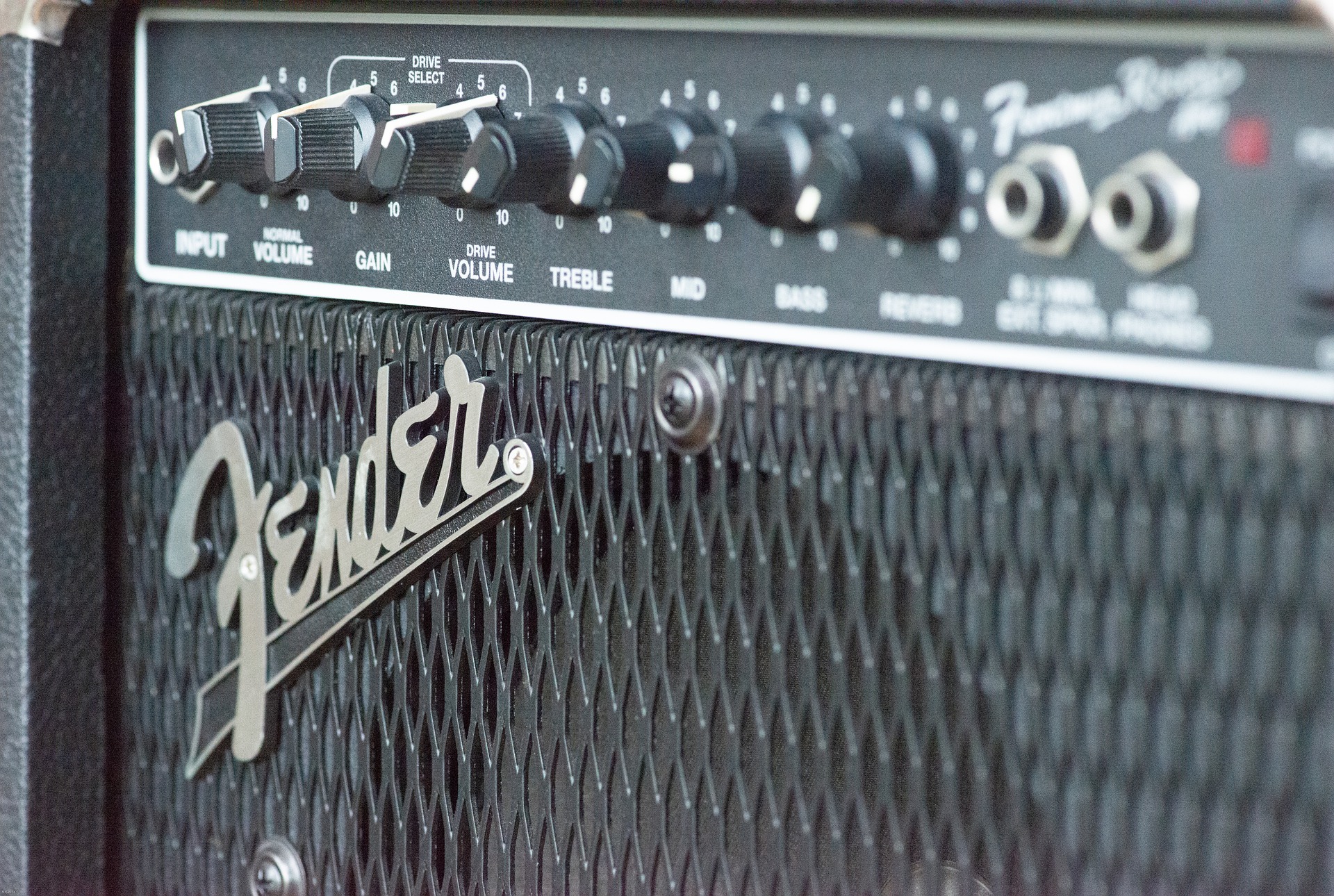
Many people who play guitar and sing ask themselves whether guitar amplifiers can also be used for microphones.
The advantages would be obvious: you would save a lot of money, because you would only have to pay once for guitar equipment. You would also save a lot of weight if you only had to take one guitar amplifier to (for example) concerts instead of bulky speakers.
Do guitar amplifiers work for microphones?
Basically you can use guitar amps for microphones as well. However, the sound will be altered and your voice will lack volume. You can also quickly damage the amplifier. In practice, therefore, it makes little sense to connect your microphone to a guitar amplifier.
Of course, this is just the short answer. If you want to know when it might make sense to use your amp for your microphone, this article is for you.
We will also look at how you can manage to connect your microphones to your amplifier WITHOUT damaging it.
Finally, we will take a look at how exactly you create a very special sound using your voice, a microphone and your amplifier.
But first, let’s answer the question of when and why you should use your amp in some cases:
When to connect your microphone to your guitar amp:
Lack of equipment: the most common reason is not having other equipment available.
Especially at the beginning of the “music career” it is often the case that the budget for good equipment is missing.
Therefore, one saves where one can save. For example also with sound equipment. Therefore it is obvious to use the purchased guitar amplifier also for the vocals.
And there is nothing wrong with that in principle. Especially beginners should first concentrate on working on their skills instead of spending money on equipment.
Just make sure you know how exactly to connect your mic to your amp so you don’t damage the mic or the amp.
Blues genre: If you are in the blues genre, I can recommend that you try it out for yourself.
The interaction between the amp and your voice is just unique and creates a very specific sound that you will never get with normal speakers.
Do you know this typical blues sound? This sound is created exactly with such tricks.
It doesn’t aim to sound remotely clear or “perfect”. Instead, it creates a feeling through a rather scratchy, rough sound.
And that’s exactly what it’s great for.
Tip: If you play blues, try recording not only your voice with the amp and the microphone, but also, for example, harmonica, piano and wind instruments.
This way you can experiment even more with sounds and create your own sound.
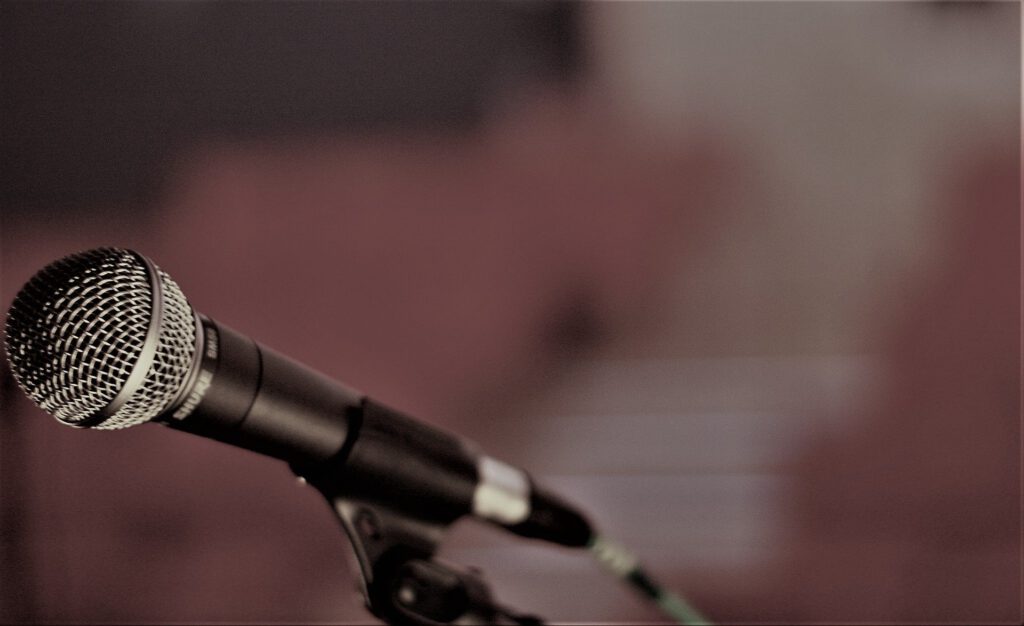
How does your voice (and other instruments) sound when you plug your mic into an amplifier?
Your voice and other instruments will sound very reduced, because guitar amps are very present especially in the mids, but at the same time they reproduce both the highs and the lows significantly reduced. At the same time, your voice will sound overdriven.
But what is the reason for this? Let’s find out!
Guitar vs. your own voice (a little comparison):
Guitars are very strong, especially in the mids. At the same time, they don’t really have much sound in the highs, nor in the lows.
The human voice is strong in all frequency ranges at the same time. Our voice, depending on how it is used, can contain a lot of bass, as well as a lot of treble.
In general, humans have a much wider range of versatility. While guitars can be used in a few different ways, the possibilities of the voice are virtually unlimited.
How the human voice should sound vs. how a guitar should sound:
The differences are also reflected in the sound of the two “instruments”.
Guitars are often said to sound somewhat overdriven. (Especially in rock, hard rock and metal). This gives electric guitars their character, which distinguishes them from acoustic guitars.
The voice, on the other hand, should (in most cases) sound as clear as possible. Overdriving is perceived as noise, not as “character”, as with the electric guitar.
While an electric guitar is often allowed to overdrive (and this is intentional), the human voice should sound as clear as possible.
What are GUITAR amplifiers designed for?
Of course, guitar amplifiers are designed for guitars, not your voice. Specifically, amplifiers are designed to perform primarily in the mids, while the highs and lows don’t really matter.
At the same time, they are designed to overdrive at the “push of a button.”
What does this comparison get us? Simple: now you know that if you want to use your amp for your voice, you should set it up differently.
Now, of course, the question is how you do that. To find out, let’s first look at what you shouldn’t do:
The most common problems with amplifiers (when using a microphone).
There are a lot of problems that can occur if you connect your microphone incorrectly. Here are some of the most common problems:
The speaker in your amplifier needs to be replaced: If you keep asking your amplifier to play frequencies it’s not designed to play, it’s going to break. Most of the time, the diaphragm is the first thing to break. However, this means that you have to replace the entire speaker. (This is especially the case at high volume).
Strange sound: If you permanently play frequency ranges that your amplifier is not designed for, it will sound very strange. The sound, also due to broken parts inside your amp, will be heard very quickly even when playing your guitar.
Broken electronics: Another wear and tear often occurs in the electronics. If you continuously play tones and frequencies that your amplifier is not designed to handle, the electronics will burn out very quickly.
You can even cause your amp to explode in the worst-case scenario.
But don’t worry. We can avoid all of these problems by knowing how to do it better.
Which cable should I use?
This is all about the connectors.
Guitars and microphones mostly use different connectors. The vast majority of microphones use “XLR connectors”. The vast majority of PA speakers also use XLR connectors. So you need an XLR to XLR cable to connect your microphone to a PA speaker.
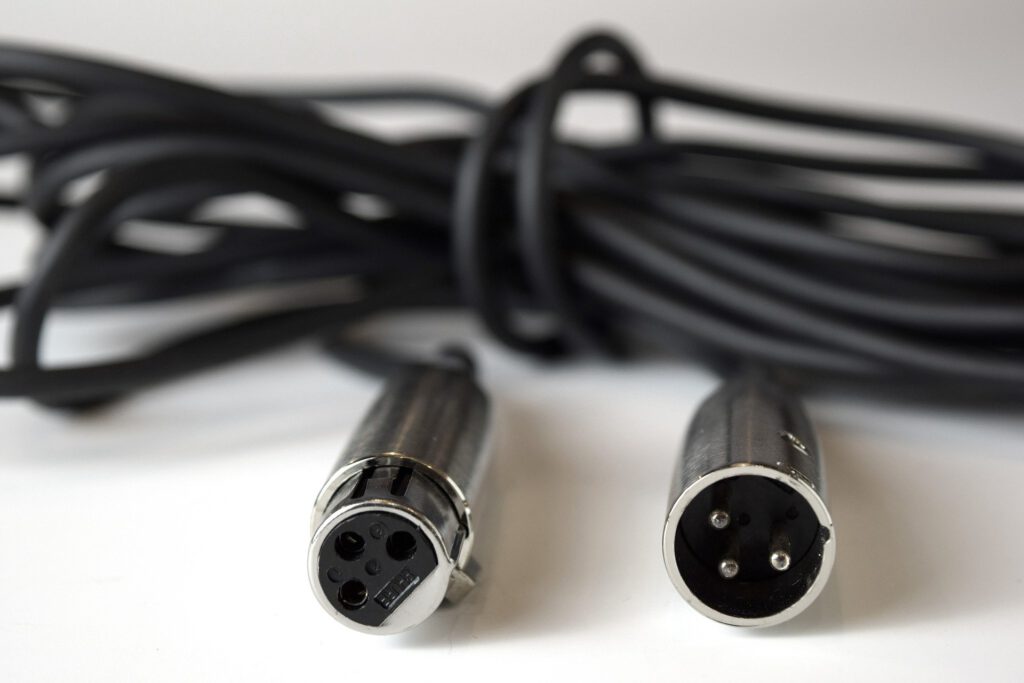
Guitar amplifiers, however, do not use XLR connectors. Instead, they use TRS connectors.
So you need an XLR to TRS cable to connect your microphone to your guitar amp in the first place.
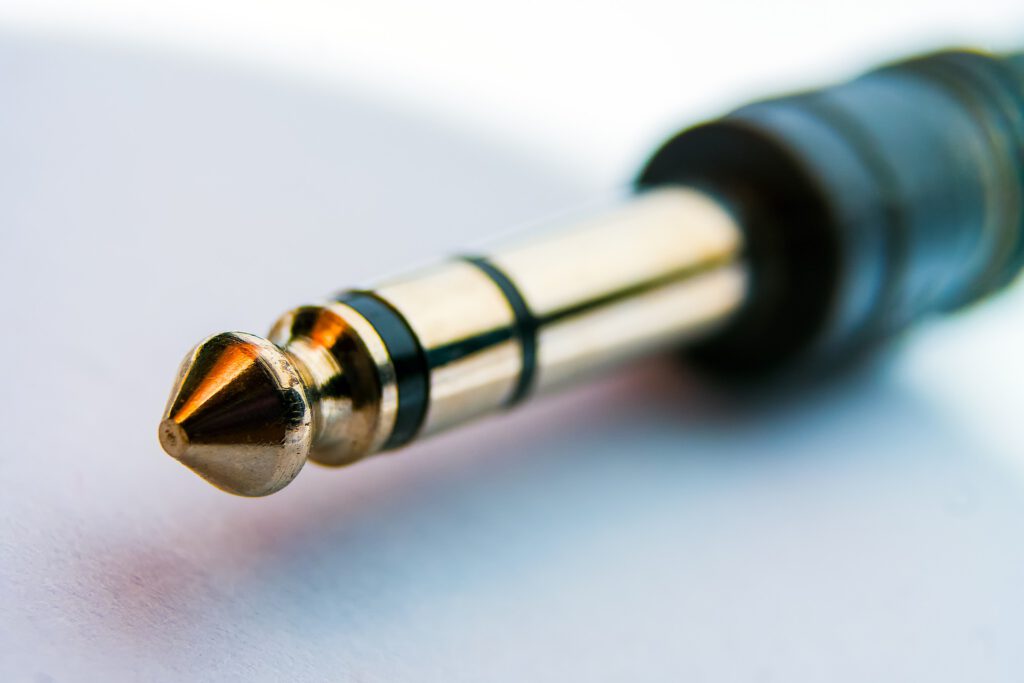
There is a specialty here:
XLR connectors are designed to transmit sound as equally, unaltered and clear as possible. TRS connectors, however, are not designed to do this. Since guitars are supposed to overdrive a bit in most cases anyway, the cable connection is also designed to do just that.
For you, this means that when choosing the right cable, you should make sure that you buy the best cable possible. At the same time, make sure that the cable transmits the sound as clearly as possible (despite the connection).
Another problem with XRS cables is that they transmit sound worse the longer the cable is.
So it’s best to make sure that your cable is only as long as you actually need it to be. Otherwise you will lose power unnecessarily.
Besides the cable itself, the microphone is also important. If you want to connect it to a guitar amp, your microphone should be as good as possible. Otherwise you will lose even more sound quality.
In the medium price range, microphones from Shure are recommended here, for example, if you want to spend a little more money for even better quality, you should look around at Sennheiser, for example.
Check out Amazon now for the best microphone for you.
Now that all the basic requirements are in place, we can connect your microphone to your amplifier.
How do I connect my microphone to my amplifier?
Tip: Use as powerful an amplifier as possible, and turn it up as little as possible. (To prevent damage).
Step 1: Plug your amplifier into the power outlet (be sure to leave your amplifier turned off while doing this).
Step 2: Adjust each knob one by one and set everything to 0. (Especially the lows, mids, highs and volume in general).
Step 3: Plug the TRS connector of your cable into the amplifier and then the XLR connector into your microphone.
Step 4: Turn on the amplifier and adjust the low, mid and high frequencies. (Hint: Don’t turn up the bass and treble all the way).
Step 5: Now adjust the volume slightly. (A little soft at first, then louder.) If your microphone is overdriven or the sound is completely eaten away, adjust the volume again.
Step 6: Now you’re ready to go and use your microphone.
Best advice:
It makes sense to buy another speaker for your microphone. Of course you can use your amplifier as a “stopgap”, but it’s better and safer to upgrade to a real PA speaker (designed for your microphone) as soon as possible.
But now let’s take a look at the advantages of PA speakers over amplifiers.
The advantages at a glance:
Durability: PA speakers last much longer than your amplifier because they are designed to do exactly what you want them to do.
Sound quality: PA speakers sound better than your amp. Your amp makes guitars sound as good as possible. PA speakers make your voice (or other instrument) sound as good as possible.
Accuracy: PA speakers reproduce sound far more accurately than amplifiers. So if you’re looking for the most accurate sound possible, you should also invest in PA speakers.
If you want to look for the perfect PA speakers, you can click this link to take a look on Amazon.
Summary and Conclusion
Of course you CAN pair your microphone with your amplifier. But the more important question is whether you SHOULD.
And the answer in the vast majority of cases is: No!
Therefore the final tip: Buy external loudspeakers that are designed for what you are doing: For microphones these are usually PA systems.
Have fun making music!

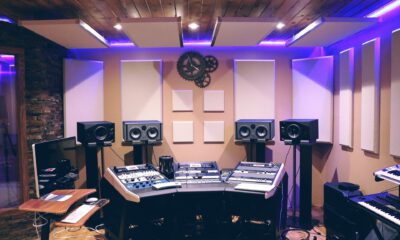
 Home Recording2 years ago
Home Recording2 years agoCan You Use Normal Speakers As Studio Monitors? The Simple Answer
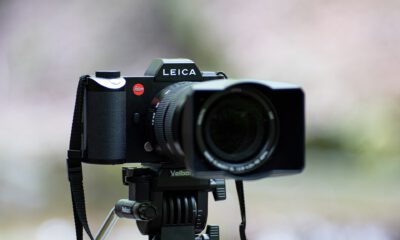
 Photography2 years ago
Photography2 years agoIs A Leica Worth It? (What you should know)
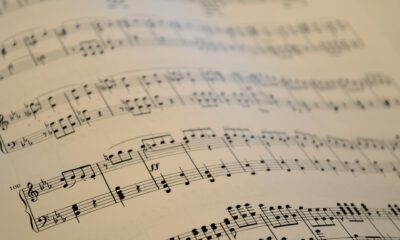
 Music Production2 years ago
Music Production2 years agoCan Piano Sheet Music Be Used For Other Instruments?
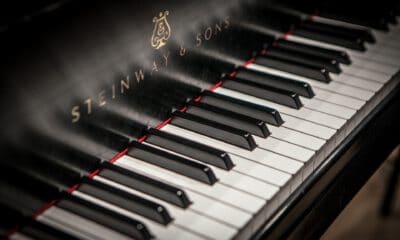
 Music Production2 years ago
Music Production2 years agoAre My Piano Keys Made Of Ivory? (How To Recognize It)







